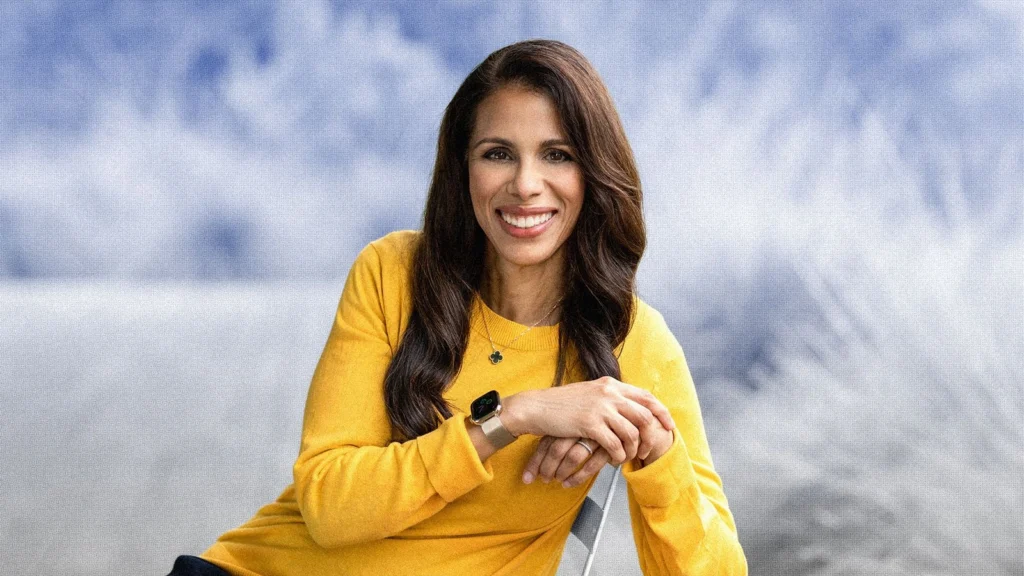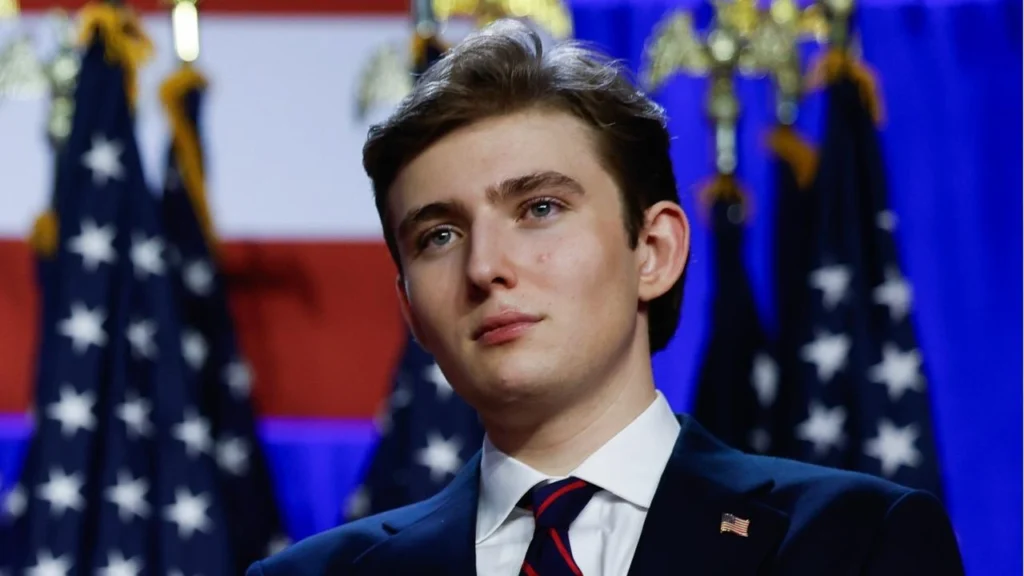Veiled Visionaries
The Modern Renaissance of Modest Fashion
By Hafsa Qadeer

In recent years, a quiet revolution has swept global runways and markets alike: modest fashion is booming. What began as a grassroots movement – driven by young Muslim women asserting their identity – has exploded into a $300+ billion industry. Iconic moments like Somali-American Halima Aden’s 2018 Vogue UK cover, her hijab-clad elegance splashed across magazine pages, signaled that the world was ready to embrace a new chapter of style. Today, traditional garments like abayas, thobes, and hijabs are reinterpreted by designers everywhere – from Riyadh to New York – with sleek cuts, unexpected textures, and bold embellishments, all while honoring their cultural roots.
The luxury brand Talabaya (Czech Republic) blends classic modest silhouettes with modern tailoring – a flowing black kaftan adorned with geometric embroidery, paired here with a crisp white shirt. Designers innovate “through textures, embellishments, and colour combinations,” says Vogue Arabia’s Teresa Karpinska, all “mindfully maintaining a familiar silhouette” as modesty demands .
Global demand is surging. Thomson Reuters estimates that in 2023, consumers spent about $254 billion on modest clothing, with forecasts pointing to $473 billion in the coming years (a 6.6% CAGR).
The Economist Intelligence Unit reports a similar trajectory: from roughly $283 billion in 2018 to an expected $402 billion by 2024. These numbers are not plucked from thin air – they reflect demographics and trends. By mid-century, 1.8 billion Muslims (about 31% of the world population) will fuel this market, and with two-thirds of them under 30, the industry’s future consumers are among the youngest on Earth. In fact, Muslim spending on fashion was projected to jump from $295 billion (2022) to $375 billion by 2025, illustrating why luxury houses and high-street brands are scrambling to keep up.
A Global Market Takes Center Stage
This boom has drawn everyone’s attention. Western retailers once indifferent to modesty are now carving out a piece of the pie. Mango, Zara, and H&M all release “Ramadan collections”; Net-a-Porter runs an annual “modest edit” featuring pieces by Oscar de la Renta, DKNY and others; even sportswear giants Nike and Adidas offer performance hijabs. Magazines and runways have become more inclusive: Vogue’s March 2017 issue famously featured Halima Aden in a hijab, and today modestwear models regularly walk major fashion weeks worldwide. Yet industry insiders caution that modest fashion is no mere fad. Vogue Arabia’s editor Teresa Karpinska notes that trends like “quiet luxury” on TikTok – flowing silhouettes, longer hemlines, understated hues – often overlap with modest principles. Pinterest reports booming searches for “modest fashion outfits,” and investors see real dollar signs: the market is “recognised as commercially lucrative”. Modest garments are increasingly worn year-round, not just during religious seasons. As Karpinska argues, modest dressing is a lifestyle, not a “seasonal sartorial fad” – and this shift is moving beyond marketing campaigns tied to Ramadan or Eid.
“Modest fashion is about choice and control… giving women the freedom to express their personal style in a way that feels authentic,” says Emirati designer Rabia Zargarpur, a pioneer who founded her eponymous label in 2001. “It’s been incredible to witness the confidence women gain when they feel comfortable and empowered in their clothing.” Her words capture why modest fashion resonates: it empowers self-expression without sacrificing values or comfort.
The business side echoes this enthusiasm. Istanbul-based Modanisa, an e-commerce platform, connects over 850 modest labels to customers in 135 countries. Founder Kerim Türé reminds us of the human side: he says modest fashion isn’t just about garments, but about women’s rights.
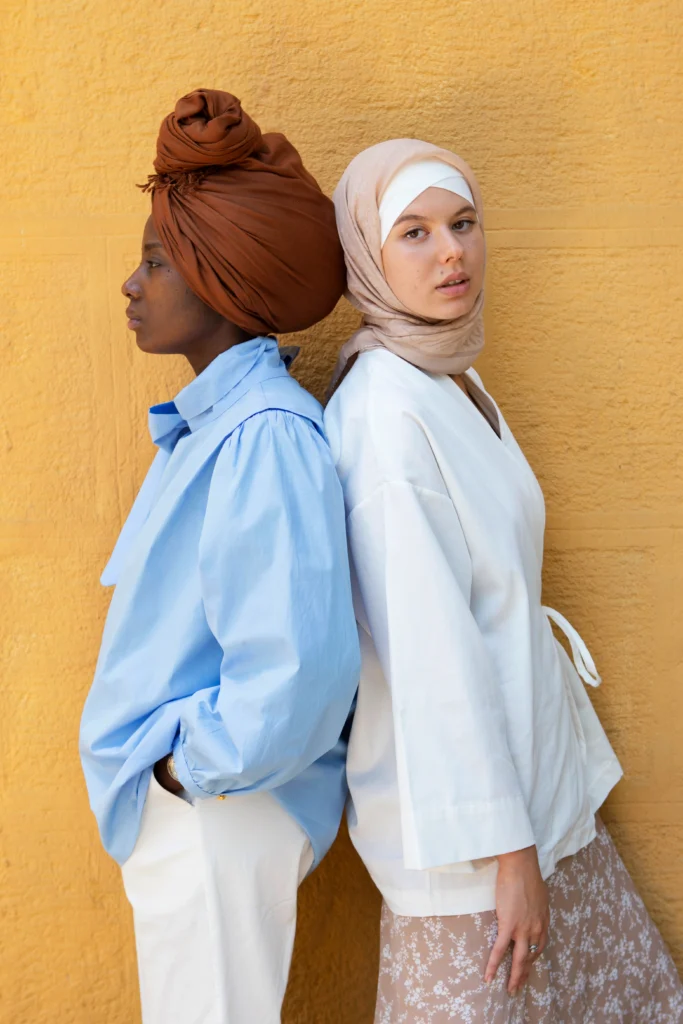

For many customers, “it’s about a woman’s right to go to the prom night or feel comfortable in a corporate environment,” not just selling clothes. In other words, these designs open doors – literally and figuratively – allowing women to navigate modern life on their own terms.
Redefining the Abaya: Tradition Woven with Innovation
Among traditional garments, the abaya has been a canvas for creativity. Once a plain black cloak, today’s abayas come alive with color, cut, and detail. “Designing an abaya might be more complex than designing dresses,” Karpinska observes, because its modesty requirements (coverage and loose fit) set firm boundaries. So how do designers innovate? They play with fabric and form. Vogue Arabia notes that inventive abaya makers push the envelope “through textures, embellishments, and colour combinations” while preserving the classic silhouette.
One Saudi duo, Rasha Alnuwaiser and Maram Alhunaiti of Capa, describe their aesthetic as “elegant, colourful and modern,” with matching undergarments and even built-in jumpsuits to make the abaya fully outfit-worthy. In a Harper’s Bazaar interview, they predicted a big change: “We expect the abaya to become a chic daytime outfit in itself; not just a garment to wear over dresses when you leave the house”. Capa’s vision is already visible on the streets of Riyadh, where young professionals pair statement abayas with heels or sneakers for everyday wear.
Other designers follow suit. Qatari label 1309 Studios mixes rich velvets with delicate lace and bold prints – a far cry from the somber black abaya – yet the shape remains respectful. Dubai’s Nora Al Shaikh pays homage to Saudi Najdi heritage with geometric motifs on flowing black crepes. Homegrown Emirati brand Kamin champions a slogan, “Wear your Values,” offering abayas in daring palettes (emerald, ruby) with matching under-dresses – balancing modesty and confidence. Waad Designs from Qatar uses Swarovski crystals and inner capes; Azzalia (UAE) features two-toned kimono sleeves and innovative tailoring. Even avant-garde labels like Chi-Ka blend Middle Eastern cloaks with Japanese minimalism, creating silhouettes that are simultaneously global and rooted.
Street style at a modest fashion event: two friends step out in tailored coats and artful hijabs. One sports a navy shawl embroidered with tiny golden stars, the other a soft brown scarf – subtle, yet richly textured. This kind of everyday elegance reflects how hijabs and abayas are merging with urban style, as designers play with prints, layers and accessories to keep looks fresh.
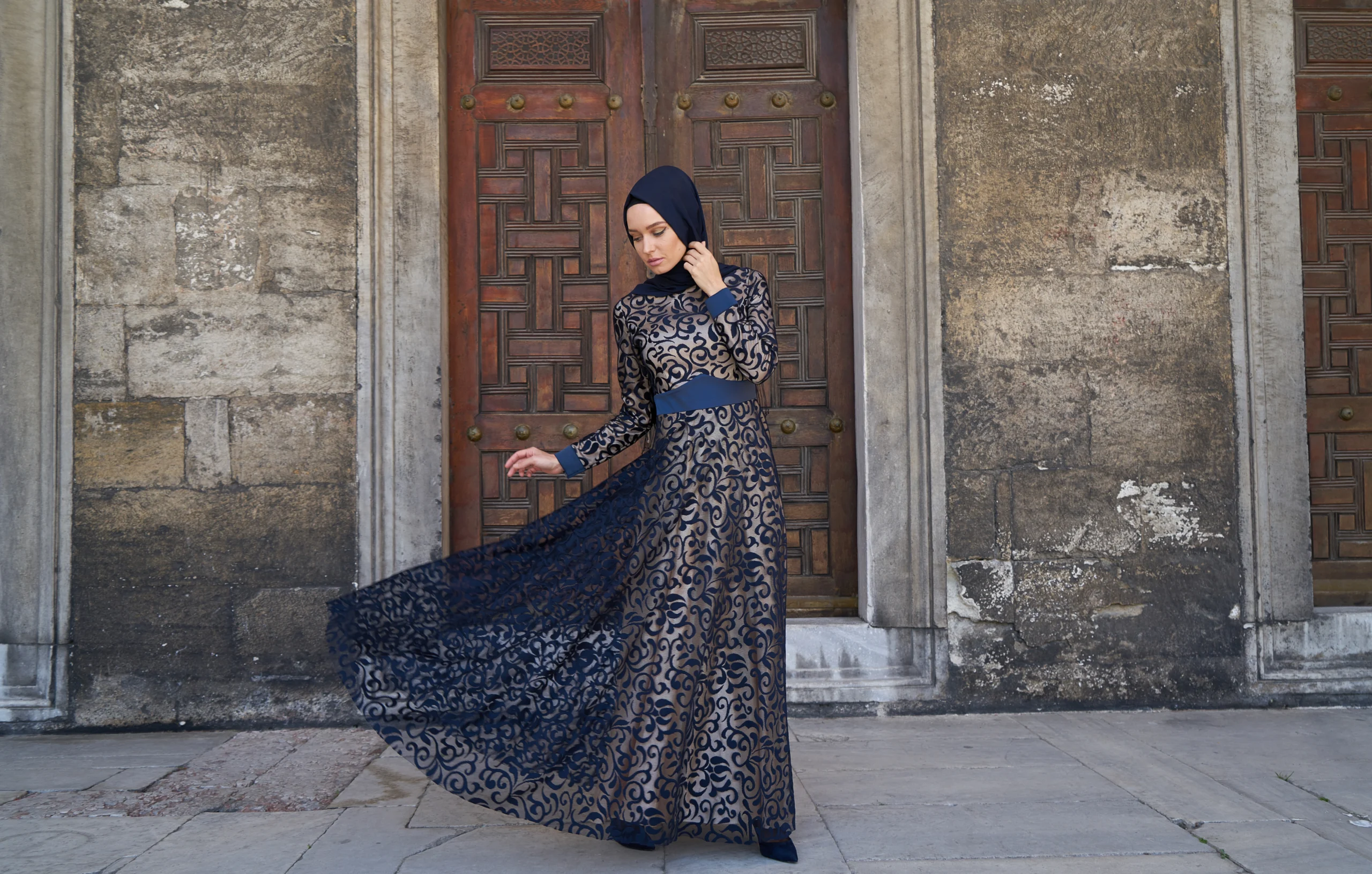
Even the abaya’s close cousin, the kaftan, is getting a makeover. Chinese designer Anna Sui showcased kaftans with modern flair, while Turkish brands offer embroidered tunics in site of the one-color desert robe. And yes, menswear too is feeling the influence: Gulf fashion bloggers note that men’s thobes are evolving with slimmer cuts, lighter fabrics and even colorful accents – no longer just the plain white gown, but a subtle way to express identity.
Not all innovations come without growing pains. Senior industry strategist Shelina Janmohamed points out a common dilemma: international brands often misjudge what modest shoppers want. “The challenge is how to retain that look for a modest market without just taking your core collection and sticking some long sleeves on it,” she says. Indeed, when Banana Republic quietly added hijabs to its lineup (in 2019), fashion insiders criticized the campaign images for still showing bare arms – missing the mark on authenticity. That one-size-fits-all pitfall is being addressed through collaborations: Macy’s teamed up with modestwear label Verona Collection in 2018 for an exclusive line, and Rabia Zargarpur argues that “if mainstream and modest come together in partnerships and collaborations… that’s where a huge chunk of the industry success would lie”. In other words, mixing expertise leads to better understanding of this unique customer.
Beyond the Veil: Global Influences and New Materials
The modest fashion narrative is also one of cross-cultural fusion. Designers worldwide are drawing on diverse traditions and reinterpret ing them with local materials. In Indonesia – home to the world’s largest Muslim population – artists like Dian Pelangi (an early Instagram sensation) incorporate batik and songket fabrics into vibrant kaftans and hijab designs, proving that heritage print can shine on high fashion stages. The same goes for Malaysia, where Vivy Yusof’s Hijab group blends local songket and lace into modern silhouettes, and Sabah-born designers experiment with colorful tenun weaving in modest eveningwear.
African designers contribute their flair too. Nigerian-born Soraya Adji of Younass Collection describes fusing Nigerian Ankara prints with French tailoring – “she found it difficult to find clothing that combined both cultures while also being modest,” Vogue Business reports. Her loose tunics and trousers in bold floral fabrics resonate globally, proving that modesty transcends any single style. In the Middle East, Israeli designer Nurit Knafo (Lirome) mixes Middle Eastern embroidery with Western cuts; Palestinian label Sawsan Designs works with local tatreez artisans, marrying centuries-old stitching with streamlined abayas and jackets. Such collaborations underscore an important insight: “When you, as the designer, are part of the culture, you have a better understanding of [the customer’s] values… and therefore you are able to serve them better,” Sawsan Mahmoud explains.
Even European and American brands are tapping into modest trends. Berlin’s Hijaberlin fuses sporty streetwear with modest cuts, and UK brand Verona Collection (founded by Austrian entrepreneur Lisa Vogl) made history in 2018 as the first hijab label sold at Macy’s. In fashion capitals, traditional craft is re-emerging: Italian houses are embracing modest by featuring Kaftans and jilbabs in ready-to-wear lines. Moroccan artisanal braiding, Turkish embroidery and Iranian shoelace trims turn up as embellishments on sweatshirts and dresses in ways that respect modest silhouettes. The result is a truly global modest aesthetic: garments that could hang in a Riyadh mall, a Kuala Lumpur boutique, or on a Manhattan sidewalk alike.
Street Style and Digital: Community Empowering Creativity
This transformation is powered not only by runway shows but by communities online and on the street. Social media influencers and modest fashion bloggers teach countless women how to style pieces in chic, contemporary ways.
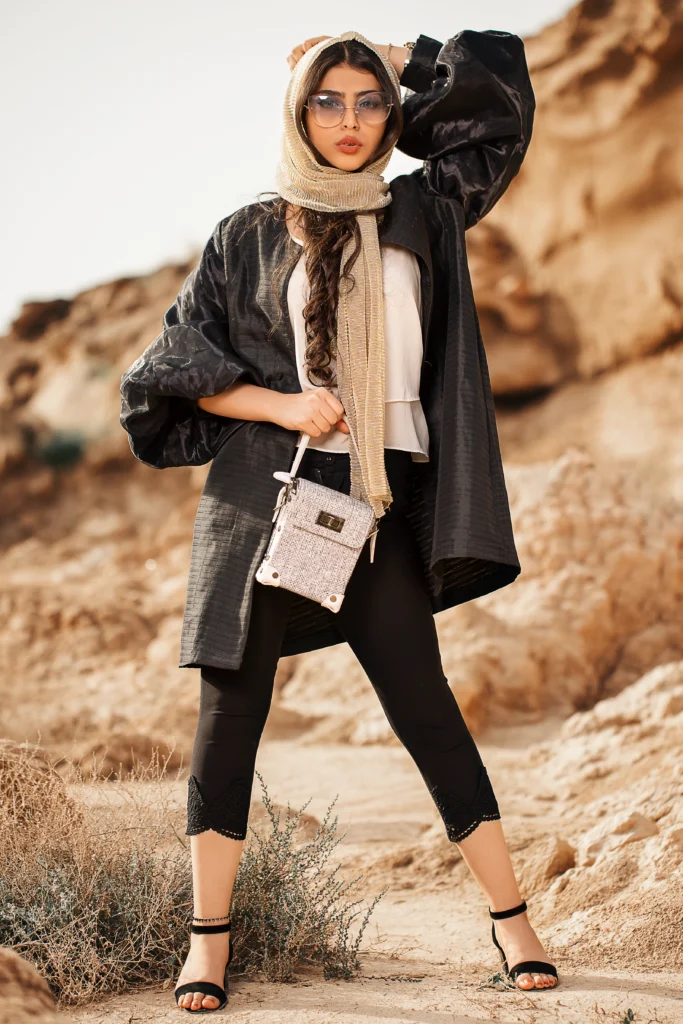

London-based Dina Aziz, for instance, built a devoted following by sharing looks and reflections; she says authenticity resonates: “I wanted my content to reflect who I truly am… authenticity is what has drawn such inspiring and like-minded people into my journey.” Similarly, Dubai’s Mariah Idrissi (the first hijab model at H&M) uses her platform to discuss faith, fashion, and sustainability, challenging fast-fashion cycles when they contradict modest principles.
In markets from Abuja to Amman, grassroots marketplaces have sprung up. Dubai’s annual Modest Fashion Days and the traveling Modest Fashion Week tours (recently landing in Riyadh) draw local and international talent. At Riyadh’s Eighth Modest Fashion Week, Turkish organizer Ozlem Ertas remarked, “We chose Riyadh… because we know Saudi Arabia is open to collaboration and can offer growth opportunities for our upcoming designers.” Royalty and media looked on as Saudi and global designers – from Nigerian kaftans to Emirati abayas to Czech modestwear – showed collections combining tradition with daring cuts. As Vogue Business reported, “Modest Fashion Week drew designers from around the world, many of whom infused strong cultural identities with a modern, international take on modest dressing.”
Importantly, the new wave of modest fashion is inclusive. It reaches across religions and styles. Maryam Khan, founder of British brand Daska, notes that modest dressers include women for whom modesty is a lifestyle choice, not always a faith requirement. In that sense, fashion’s future belongs to those who see covering up not as limitation but as a form of empowerment.
Outside an ultramodern building, a model (Nofa Deen collection) wears a peach-colored jilbab that drapes elegantly to the ground. The minimal lines and monochrome palette highlight that even traditional silhouettes can feel fresh when given a contemporary twist.
Empowered Style: Heritage Meets Purpose
What all these designers and enthusiasts share is the belief that modest fashion empowers. It allows people – especially women – to express creativity without compromising values. As Rabia Zargarpur puts it, modest fashion is fundamentally about “giving women the freedom to express their personal style in a way that feels authentic,” boosting confidence as a result
. Likewise, London influencer Dina Aziz emphasizes that modest style helped her build an honest platform: “authenticity is what has drawn such inspiring and like-minded people into my journey,” she says.
Veteran figures remind us that the modest fashion movement has a conscience. Austrian designer Lisa Vogl (of Verona Collection) turned her label into a nonprofit brand, employing refugee women in Turkey and aiming to open more factories for displaced makers. For Lisa and many others, fashion and ethics go hand-in-hand: local craftsmanship, sustainable fabrics and fair labor are now part of the conversation. As cultural studies professor Reina Lewis notes, modest fashion’s grassroots ethos – covering one’s body for ethical reasons – naturally leads to demands for “planetary and social responsibility”. Brands delivering on these values may well gain an edge in the crowded market.
In the United States, Melanie Elturk of Haute Hijab notes a milestone: after 14 years, her mission to “normalize” hijab has largely been accomplished – it’s “just so commonplace now; it’s a non-issue,” she says. (Indeed, when H&M launched its first hijab campaign in 2015, featuring Mariah Idrissi, it raised eyebrows – a sign of how much has changed since.) For Melanie and her peers, the next challenge is breaking remaining stereotypes. “Now that it’s more visible,” she reflects, “how can we break down some of the stereotypes that still exist?” That question – how modest fashion can further promote understanding and inclusion – is exactly what the movement is grappling with as it grows.
Looking Ahead: Balancing Heritage and Innovation
The narrative of modest fashion is far from over. Designers will continue to push boundaries: mixing avant-garde cuts with centuries-old embroideries, or using hi-tech fabrics to keep garments breathable and easy to wear. Retailers will need to stay close to their customers’ values – as Kerim Türé of Modanisa reminds us, there’s “no one-size-fits-all approach for the modest woman… You need to go the extra mile, to be closer to the consumers, to understand what they want.”
Already, luxury groups are including Arab consultants, and small labels are popping up at local bazaars and online shops in unexpected places. One thing is clear: modest fashion today is about more than stitches and fabrics. It’s about confidence, identity and community. Each embroidered abaya or artfully wrapped turban is a statement that tradition and modernity can coexist. It’s a story of heritage transformed, but still honored – of women seizing the runway (and the office, and the beach) on their own terms. As Rabia Zargarpur hopes, perhaps the next wave of global brands will even emerge from this space. “I want to see incredible global brands emerge,” she says, driving a “thriving and innovative modest fashion industry”
The year is 2025, and modest fashion has already traveled a long road. From the neighborhoods of Istanbul and Bandung to the streets of London and Lagos, each scarf and tunic tells a cultural story. Today’s modest garments – with their sleek silhouettes, luxurious embellishments and thoughtful functionality – invite the world to see modesty not as constraint, but as creativity. In that sense, the evolution of modest fashion is not just a passing trend, but a renaissance: one that celebrates the past while daring to design a new future.

